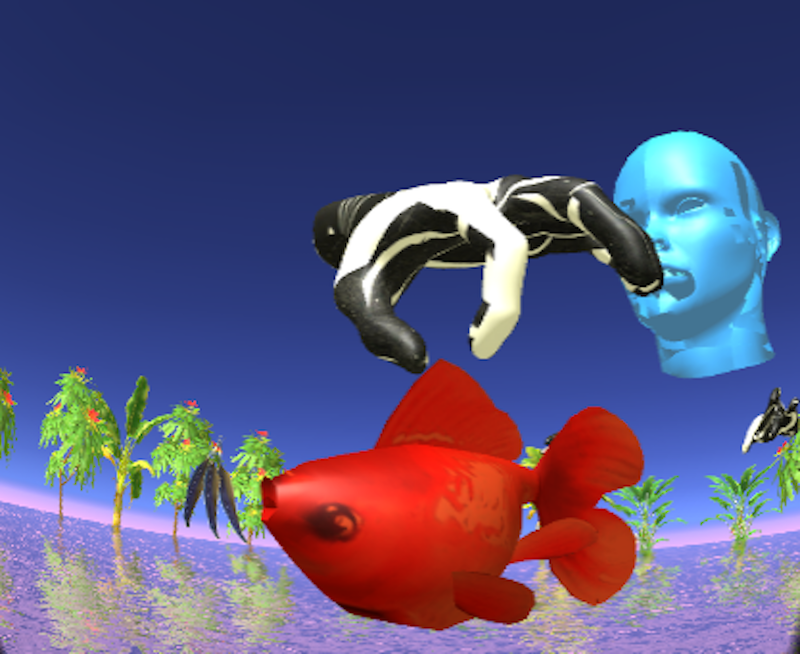 "ASM(V)R", 2017 © Salome Asega & Reese Donohue & Tongkwai Lulin, courtesy the artists
"ASM(V)R", 2017 © Salome Asega & Reese Donohue & Tongkwai Lulin, courtesy the artists
Exploring the relationship between Virtual Reality and contemporary art, the exhibition “Beautiful New Worlds” at the Zeppelin Museum presents 11 artistic positions and their handling of the digital medium, including Forensic Architecture, Harun Farocki and Halil Altindere. Curated by Ina Neddermeyer and curatorial assistant Dominik Busch, it emphasises both the advantages and the critical downsides of VR-technique's potential – exploring the consequences it might cause in our future lives, in our notion of reality and in the production and perception of art. It addresses different formats of narration and the effects VR-techniques might have on the socio-political dimension and its reflection. Set in the green surroundings of Friedrichshafen in the south of Germany, right at the shores of Lake Constance, the exhibition could hardly cause more contradiction to its harmonious geographical setting. In our interview the curators Ina and Dominik explained what led them to initiate this exhibition and why they think this subject is currently so relevant.
Anna-Lena Werner: The exhibition “Beautiful New Worlds” shows 11 international positions, which use VR-technologies to address immersive simulations of real life in contemporary art. Would you say that the overall canon of the exhibition suggests the virtual world as a utopia, a dystopia, or simply as a useful tool?
Ina Neddermeyer: The virtual worlds are utopia, dystopia and a useful tool at the same time. This is why the medium is so interesting for artists to work with and these are also the different topics of the exhibition.
Dominik Busch: It is definitely all three facets that the exhibition points one’s attention to. However, the intersection of real and virtual space is an additional core aspect that especially the works by Florian Meisenberg and Banz & Bowinkel engage.

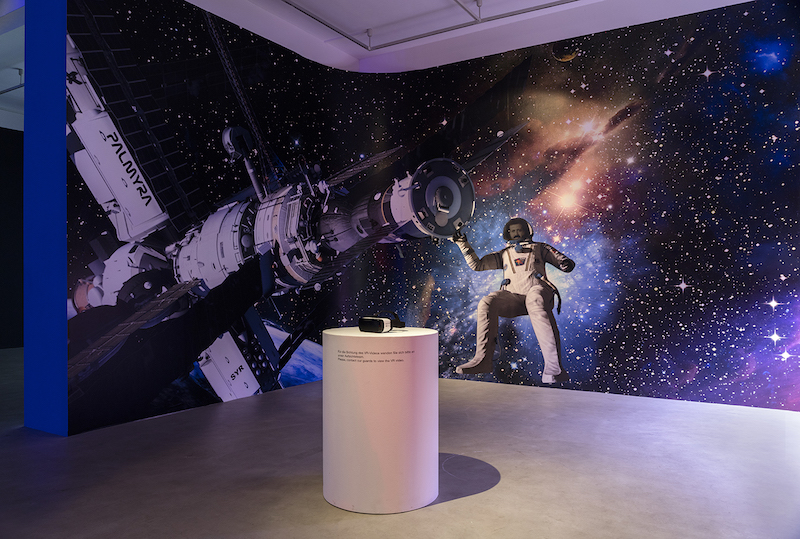 Above: Banz & Bowinkel, Palo Alto, 2017, stills from VR-02 © and courtesy of the artists
Above: Banz & Bowinkel, Palo Alto, 2017, stills from VR-02 © and courtesy of the artistsBelow: "Journey to Mars," 2016 © Halil Altindere, 360 VR Video, 5:10 min, Courtesy of the artist and Pilot Gallery, Istanbul
ALW: Was there an initial work that influenced your curatorial research as a starting point or led you to think about contemporary art and its utilisation of VR technologies in general?
IN: It was less an initial work that started the curatorial process rather than a general observation that a lot of different artists work with VR and that it would be extremely interesting to curate an exhibition that gives an overview of this new medium.
ALW: What are the key themes and subjects within contemporary digital art forms that you wanted to raise with the show and that interest you the most?
IN: A focal point of the exhibition is to show the different ways artists work with VR to establish new narration formats, to reflect socio-political dimensions of the new technology and their technical conditions and to explore new artistic potentials.
DB: The most interesting to me are basically the ups and downs of a new medium emerging, whether they be technical, aesthetical or their yet imagined consequences on a social level. It is one of the most exciting moments to be able to witness a whole new form of imaging evolving. I think we have some very strong artistic positions in the exhibition that mirror a rather dystopian perspective on VR, but nevertheless show its potential without judging.
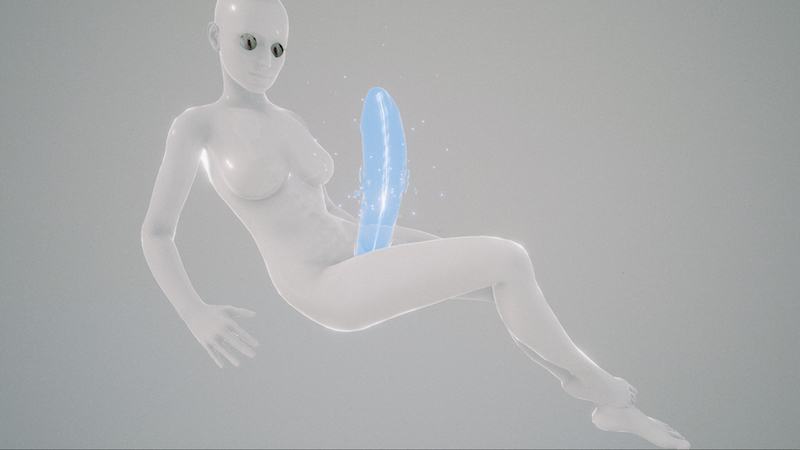 "DICKGIRL 3D(X)", 2016, © Sidsel Meineche Hansen (still, CGI animation, HD video with sound, 3 min. loop)
"DICKGIRL 3D(X)", 2016, © Sidsel Meineche Hansen (still, CGI animation, HD video with sound, 3 min. loop)
ALW: Which artists underline the problematic sides of virtual reality through their work?
IN: Many artists critically reflect on virtual reality, for example Sidsel Meineche Hansen deals with VR pornography and examines post-human sexuality, Harun Farocki analyses the role of virtual reality as a component of modern warfare.
DB: micha cárdenas shows quite plainly what immediate effect VR can have on real life: she was able to legally qualify her gender reassignment through a 365-hours VR-performance.

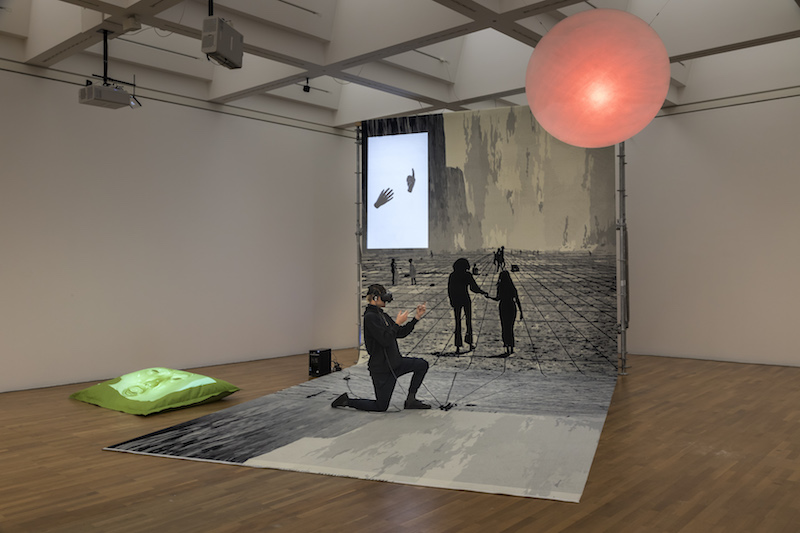
Above:"Becoming Dragon", 2008 © micha cárdenas, installation view © photo by Elle Mehrmand, courtesy of the artist
Below: "Pre-Alpha Courtyard Games", 2017 © Florian Meisenberg, installation view at Zeppelin Museum, Photo by Tretter
Below: "Pre-Alpha Courtyard Games", 2017 © Florian Meisenberg, installation view at Zeppelin Museum, Photo by Tretter
ALW: Florian Meisenberg, Sidsel Meinche Hansen or the artist collective Salome Asega, Reese Donohue & Tongkawi Lulin each play quite differently with intimate physicality and sensory experiences through their digital works. In regard to the exhibition, can you observe a tendency towards what role the human body and its precariousness play in digital art forms?
IN: The human body, its physicality and digital representation play an important role in the exhibition. VR leads to a strong physical involvement and at the same time it is juxtaposed with a distance to the virtual images, as it is not possible to touch and feel objects as physical objects. This simultaneity of disembodiment and enhancement of corporeality is a precarious play in VR works.
ALW: The Nest Collective’s “Let This Be A Warning—A VR Short Film” and Halil Altindre’s “Journey to Mars” both use VR technology to simulate future scenarios of refugee migration and racist encounters on other planets. How did the audience speak about their experiences with these immersive works?
IN: In the immersive installations the visitors of the exhibition perceive the virtual images primarily as unframed image spaces. Instead of merely viewing an artwork from an outside view, Virtual Reality means experiencing works of art from an inside view and thus in a supposedly immersive way. Visitors become a part of the virtual world and therefore are addressed and involved directly, they can become part of the artwork. These lead to a strong physical involvement, which is a challenge for the sense of balance for the audience. Visitors tell us that they have a different spatial experience of images as they can move and change their perspective in the virtual worlds. They feel attracted and exhausted by these virtual images at the same time.
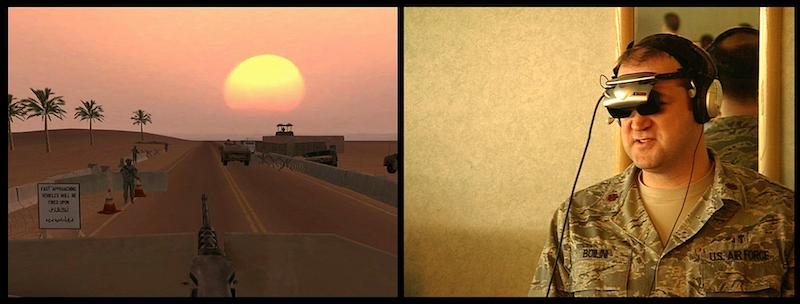
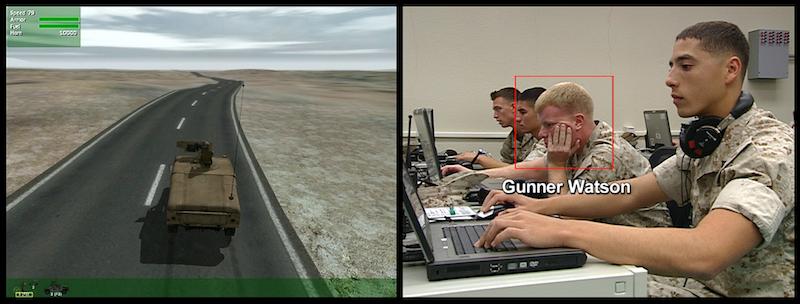
"Serious Games 1, Watson is Down" © Harun Farocki 2010
ALW: Harun Farocki’s video installations “Serious Games I & III" observe the usage of VR-technology in the military, both as a training program simulating future scenarios and as a virtual trauma therapy simulating memory visuals. Has this issue of life and virtual life merging together been relevant to your curatorial approach?
IN: Of course, it is an extremely interesting aspect to see how virtual and real worlds interfere, the way they merge together. Virtual technologies have a fundamental impact on our ‚real lives’ as it is always about conquering new physical spaces.
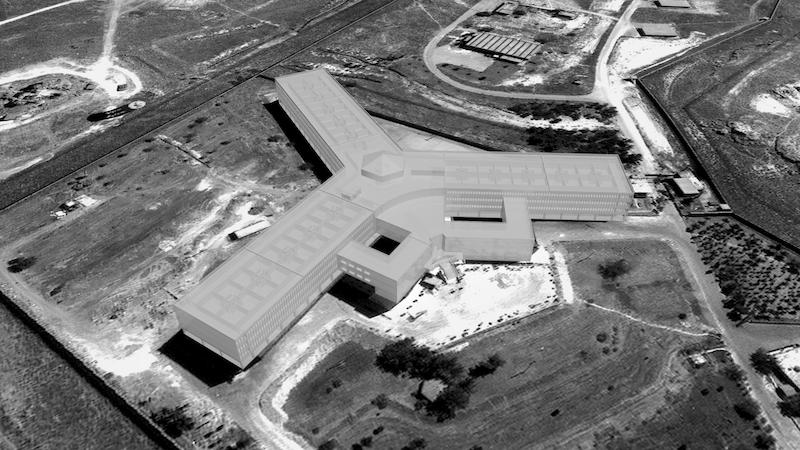
 3D model of Saydnaya prison. Using architectural and acoustic modelling, Forensic Architecture and Amnesty International helped witnesses to reconstruct the architecture of Saydnaya, a Syrian prison where thousands have been held in inhumane conditions, tortured, and killed. As there are no images of Saydnaya, the research team was dependent on the memories of survivors to recreate what is happening inside. The former detainees described architectural features, such as the cell pictured, to an architect working with 3D modelling software. Image © Forensic Architecture and Amnesty International, 2016
3D model of Saydnaya prison. Using architectural and acoustic modelling, Forensic Architecture and Amnesty International helped witnesses to reconstruct the architecture of Saydnaya, a Syrian prison where thousands have been held in inhumane conditions, tortured, and killed. As there are no images of Saydnaya, the research team was dependent on the memories of survivors to recreate what is happening inside. The former detainees described architectural features, such as the cell pictured, to an architect working with 3D modelling software. Image © Forensic Architecture and Amnesty International, 2016

 3D model of Saydnaya prison. Using architectural and acoustic modelling, Forensic Architecture and Amnesty International helped witnesses to reconstruct the architecture of Saydnaya, a Syrian prison where thousands have been held in inhumane conditions, tortured, and killed. As there are no images of Saydnaya, the research team was dependent on the memories of survivors to recreate what is happening inside. The former detainees described architectural features, such as the cell pictured, to an architect working with 3D modelling software. Image © Forensic Architecture and Amnesty International, 2016
3D model of Saydnaya prison. Using architectural and acoustic modelling, Forensic Architecture and Amnesty International helped witnesses to reconstruct the architecture of Saydnaya, a Syrian prison where thousands have been held in inhumane conditions, tortured, and killed. As there are no images of Saydnaya, the research team was dependent on the memories of survivors to recreate what is happening inside. The former detainees described architectural features, such as the cell pictured, to an architect working with 3D modelling software. Image © Forensic Architecture and Amnesty International, 2016
ALW: The “Saydnaya” project by the British artist group Forensic Architecture virtually simulates the architecture and the sounds of a Syrian torture prison, only based on survivors' testimonies. There are no images of Saydnaya, nor are there independent monitors allowed inside the prison. Do you think that in this work and in others VR-technologies can enable artists to address some issues differently than with traditional artistic media?
DB: Technically speaking, I don’t think of the Saydnaya project as “a VR project”. It rather uses virtual imaging technology to create a 3D image of a place that we didn’t know how to picture before. It is a conceptual difference between virtual reality and virtual space. To me, Forensic Architecture creates and uses virtual spaces to portray something that comes with heavy socio-political implementations. It is really more a politically charged artistic position than a technologically oriented one.
IN: Forensic Architecture use the digital technologies to investigate human rights violation. With the help of simulations, they create an image of the Syrian torture prison that didn’t exist before to make these cruelties visible. Therefore I think that the digital technologies and especially the VR-technologies offer a lot of (new) possibilities for the artists.
BEAUTIFUL NEW WORLDS
11.11.17 - 08.04.18
ZEPPELIN MUSEUM
Friedrichshafen, Germany
zeppelin-museum.de
BEAUTIFUL NEW WORLDS
11.11.17 - 08.04.18
ZEPPELIN MUSEUM
Friedrichshafen, Germany
zeppelin-museum.de
